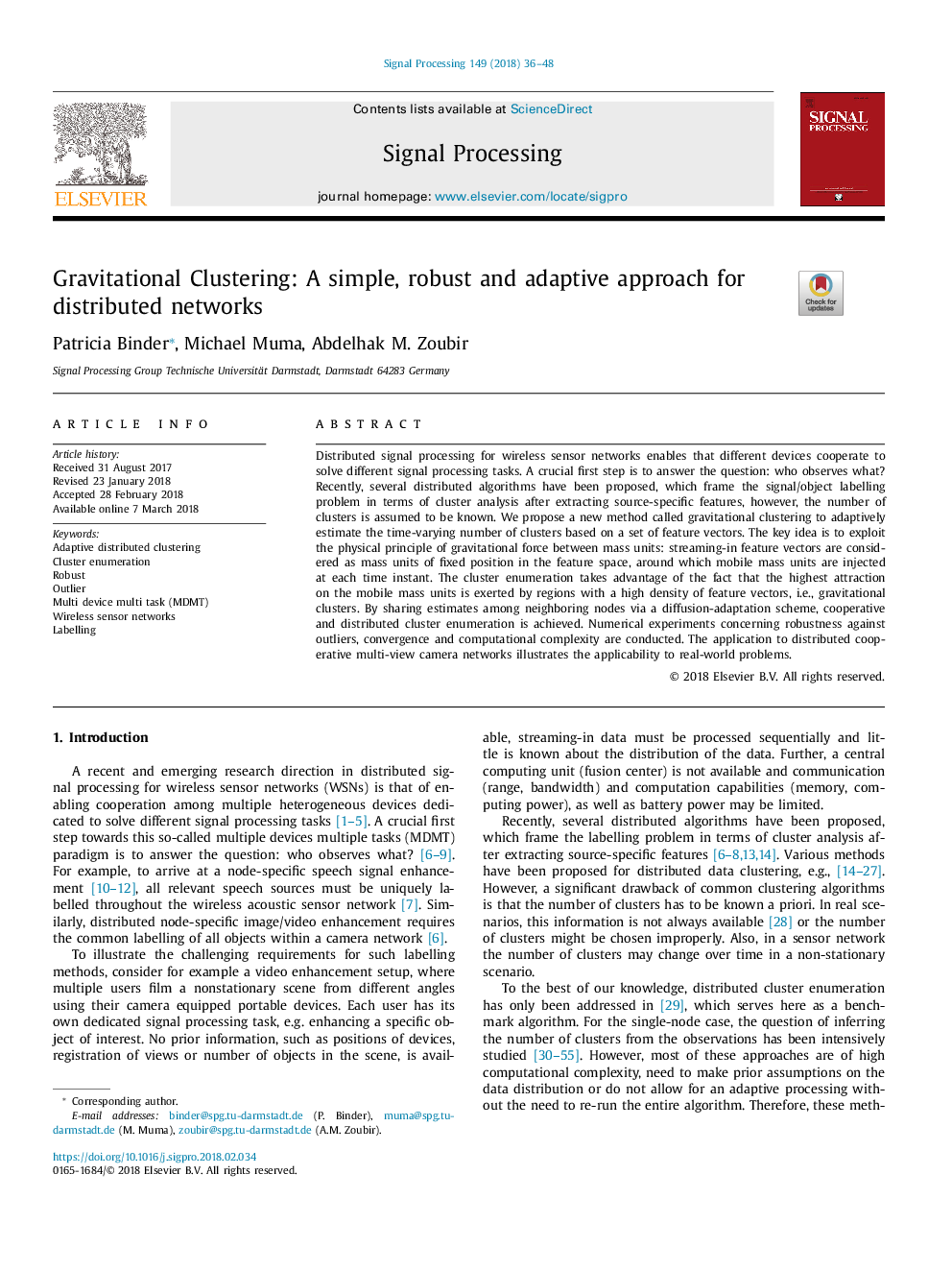| Article ID | Journal | Published Year | Pages | File Type |
|---|---|---|---|---|
| 6957428 | Signal Processing | 2018 | 13 Pages |
Abstract
Distributed signal processing for wireless sensor networks enables that different devices cooperate to solve different signal processing tasks. A crucial first step is to answer the question: who observes what? Recently, several distributed algorithms have been proposed, which frame the signal/object labelling problem in terms of cluster analysis after extracting source-specific features, however, the number of clusters is assumed to be known. We propose a new method called gravitational clustering to adaptively estimate the time-varying number of clusters based on a set of feature vectors. The key idea is to exploit the physical principle of gravitational force between mass units: streaming-in feature vectors are considered as mass units of fixed position in the feature space, around which mobile mass units are injected at each time instant. The cluster enumeration takes advantage of the fact that the highest attraction on the mobile mass units is exerted by regions with a high density of feature vectors, i.e., gravitational clusters. By sharing estimates among neighboring nodes via a diffusion-adaptation scheme, cooperative and distributed cluster enumeration is achieved. Numerical experiments concerning robustness against outliers, convergence and computational complexity are conducted. The application to distributed cooperative multi-view camera networks illustrates the applicability to real-world problems.
Related Topics
Physical Sciences and Engineering
Computer Science
Signal Processing
Authors
Patricia Binder, Michael Muma, Abdelhak M. Zoubir,
